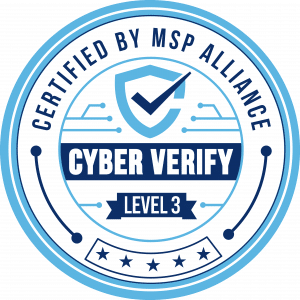
In today’s regulatory landscape, businesses must adhere to various laws and standards designed to protect sensitive information and ensure data privacy. Improving cybersecurity is a critical step in meeting these compliance requirements. Here’s how enhanced cybersecurity measures can help:
1. Data Protection
Regulations such as the General Data Protection Regulation (GDPR) and the Health Insurance Portability and Accountability Act (HIPAA) mandate strict data protection measures. By implementing robust cybersecurity protocols, businesses can ensure the confidentiality, integrity, and availability of sensitive data, thereby meeting these regulatory requirements
2. Risk Management
Effective cybersecurity involves conducting regular risk assessments to identify vulnerabilities and threats. This proactive approach aligns with compliance frameworks like the National Institute of Standards and Technology (NIST) Cybersecurity Framework, which emphasizes risk management as a core component
By addressing potential risks, businesses can demonstrate their commitment to maintaining a secure environment.
3. Access Control
Regulatory standards often require businesses to implement strict access controls to protect sensitive information. Cybersecurity measures such as multi-factor authentication, role-based access control, and regular access reviews help ensure that only authorized individuals can access critical data and systems
This not only enhances security but also ensures compliance with access control requirements.
4. Incident Response
Having a well-defined incident response plan is essential for compliance with regulations that mandate timely reporting and handling of security breaches. Cybersecurity improvements include establishing and regularly updating incident response protocols to quickly detect, respond to, and recover from cyber incidents
This readiness helps businesses meet regulatory obligations and minimize the impact of breaches.
5. Employee Training
Many compliance regulations require businesses to provide regular cybersecurity training to their employees. By improving cybersecurity awareness and education, businesses can ensure that their staff are knowledgeable about security best practices and compliance requirements
This reduces the risk of human error and strengthens the overall security posture.
6. Auditing and Monitoring
Continuous monitoring and regular audits are crucial for maintaining compliance. Enhanced cybersecurity measures include implementing advanced monitoring tools and conducting periodic security audits to identify and address any gaps
This ongoing vigilance helps businesses stay compliant with regulatory standards and quickly adapt to any changes.
7. Data Encryption
Encryption is a key requirement in many data protection regulations. By encrypting sensitive data both at rest and in transit, businesses can protect it from unauthorized access and breaches
This not only enhances security but also ensures compliance with encryption mandates.
8. Documentation and Reporting
Regulatory compliance often involves maintaining detailed records and documentation of security measures, incidents, and responses. Improved cybersecurity practices include thorough documentation and regular reporting to demonstrate compliance
This transparency is essential for regulatory audits and helps build trust with stakeholders.
In conclusion, improving cybersecurity is integral to meeting compliance requirements. By protecting data, managing risks, controlling access, responding to incidents, training employees, monitoring systems, encrypting data, and maintaining documentation, businesses can ensure they adhere to regulatory standards and protect their valuable assets.





